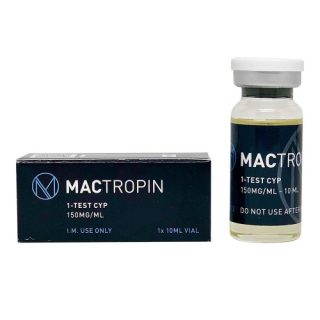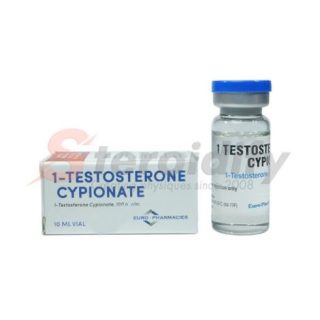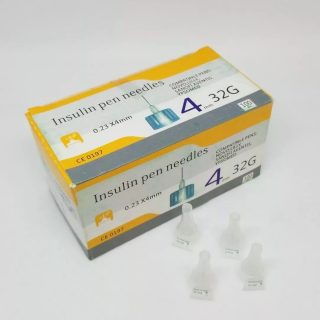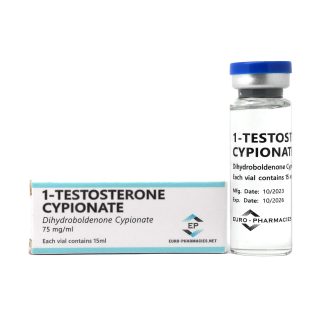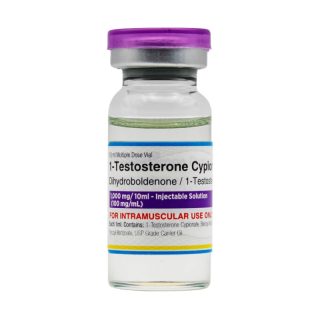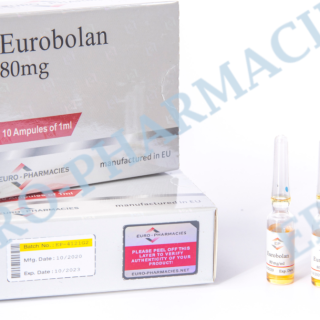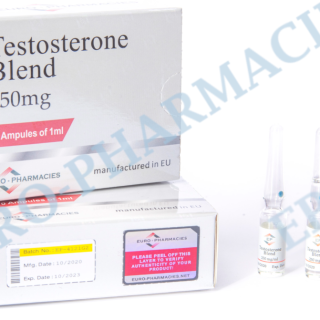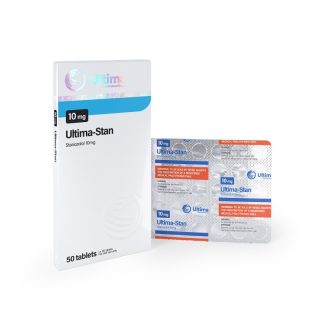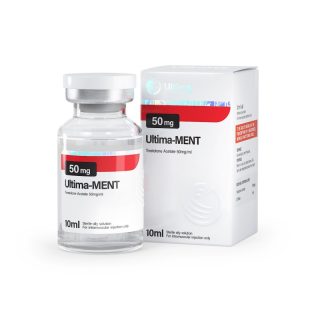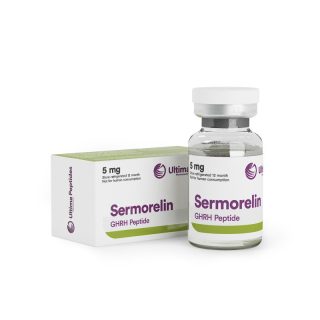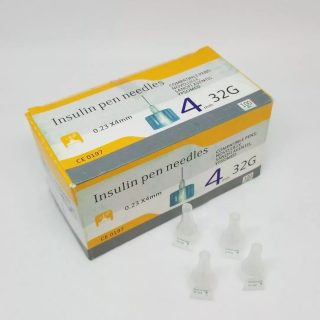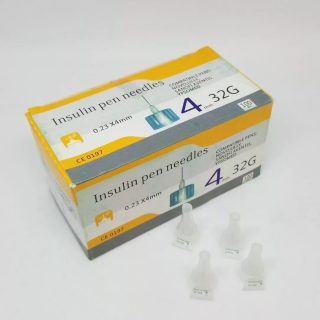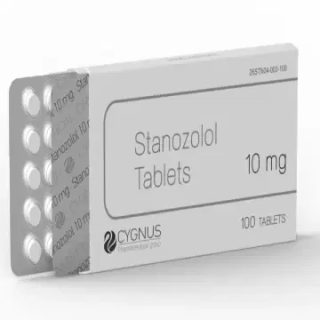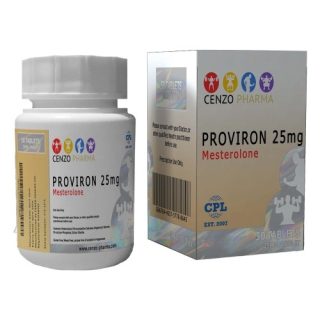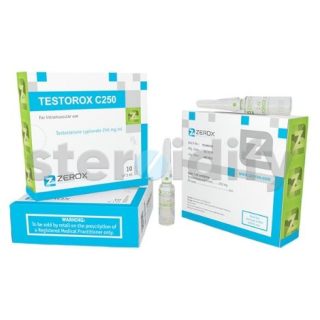Medical instructions for use of testosterone
Indications
After i.m. administration Cmax in plasma is reached between 2.5-5 h. In blood, testosterone binds (about 98%) to a specific fraction of globulins that bind testosterone and estradiol. Metabolised mainly in the liver to form inactive androsterone and inactive etiocholanolone. Excreted as metabolites, mainly by the kidneys and through the intestine (about 6%). T ½ from plasma is 3-4 h. After application to the skin, the degree of absorption of testosterone is 9-14%.
Pharmacological action
Hormone of the male sex glands. Has androgenic activity. Contributes to the formation of sexual organs and the development of secondary sexual characteristics in men. In hypogonadism of various etiologies exogenous testosterone fills the deficit of endogenous hormone. Testosterone also has an anabolic effect: stimulates protein synthesis in the body, accelerates calcification of bones. Causes retention in the body of nitrogen, potassium, calcium, sulfur, phosphate, as well as sodium, chlorine, water. Stimulates erythropoiesis. In women, testosterone causes suppression of gonadotropic function of the pituitary gland, ovarian function, mammary glands, atrophy of the endometrium.
Drug interaction
Concomitant use with inducers of microsomal oxidation enzymes (including barbiturates, rifampicin) may reduce the effectiveness of testosterone. Increases the effect of indirect anticoagulants (warfarin, nikumalon, phenylin), which may lead to the need for dose adjustment.
- Enhances the effect of hypoglycaemic agents.
- Inhibits the excretion of cyclosporine, increases the concentration of oxyphenbutazone in plasma.
- The concomitant use of testosterone with ACTH or GCS increases the risk of oedema.
Dosage regimen
For intravenous administration the single dose is 25-100 mg. Frequency of administration depends on the applied treatment regimen.
Apply externally in the appropriate dosage form according to a special scheme.
Contraindications to use
Male breast cancer, prostate cancer, gynaecomastia, nephrotic stage of chronic glomerulonephritis, prostatic hypertrophy with urinary retention, renal failure, hepatic failure, hypercalcaemia, chronic heart failure, diabetes mellitus, myocardial infarction in the anamnesis, widespread atherosclerosis; pregnancy, period of breastfeeding.
It is not used externally in women.
With caution
Asthenic physique, advanced age in men, arterial hypertension in men, epilepsy, migraine, CHD in patients prone to oedema, adolescence in boys (before puberty), benign prostatic hyperplasia.
Use in children
When treating prepubertal adolescents, systematic monitoring is recommended to avoid premature closure of bone epiphyses, premature puberty.
Restrictions for children
Use with caution
Use in elderly patients
Use with caution in elderly males.
Limitations in elderly patients
Use with caution
Use in liver dysfunction
Use is contraindicated in hepatic impairment.
Limitations in liver dysfunction
Used with caution
Use in pregnancy and lactation
Contraindicated use in pregnancy and during breastfeeding.
It is not used externally in women.
Restrictions during breastfeeding
Contraindicated
Restrictions in pregnancy
Contraindicated
Use in renal dysfunction
Contraindicated use in the nephrotic stage of chronic glomerulonephritis; in renal failure.
Limitations in renal dysfunction
Used with caution
Special instructions
- Testosterone concentration should be monitored at the beginning of treatment and regularly during treatment. The dose is selected individually to ensure regulation of eugonadal testosterone levels.
Patients with arterial hypertension, migraine, epilepsy require regular medical supervision during treatment. In these groups of patients the drug should be used with caution. - In patients suffering from severe cardiac, hepatic or renal insufficiency or CHD, treatment with testosterone preparations may cause complications characterised by edema with or without chronic heart failure. In this case, treatment should be discontinued immediately.
Existing sleep apnoea syndrome may worsen, especially in the presence of risk factors such as obesity and chronic respiratory disease. - There are limited data on the efficacy and safety of testosterone preparations in patients over the age of 65 years. There are currently no agreed data on age limits for testosterone use, but it should be taken into account that physiological serum testosterone concentrations decrease with increasing age.
- The use of testosterone for the treatment of children along with masculinisation may cause accelerated growth and maturation of bone tissue, as well as premature closure of the epiphyseal growth zone, resulting in reduced final height. Therefore, it should be used with caution in adolescent boys before puberty.
- Common acne may occur.
- In women, virilism may develop at high doses.
- When used in athletes, it is necessary to take into account the fact that this drug contains an active substance (testosterone), which may give a positive reaction in anti-doping tests.
- Before starting treatment in men it is necessary to exclude the diagnosis of prostate cancer, because when used, androgens increase the risk of prostatic hyperplasia; the use of androgens may promote the growth of an existing malignant tumour.
- During the period of treatment it is necessary to conduct regular examination of the prostate gland in men.
Rare cases of benign and malignant liver tumours with the development of intra-abdominal bleeding have been observed during treatment with sex steroids. - In case of occurrence during treatment of pronounced abdominal pain, liver enlargement, signs of intra-abdominal bleeding, the possibility of liver tumour should be taken into account in the differential diagnosis.
- In patients taking androgens for a long period of time, in addition to laboratory measurements of testosterone concentration, the following laboratory parameters should be checked periodically: haemoglobin, haematocrit (to detect polycythemia), liver function tests and lipid profile.
- Abuse of testosterone preparations has been reported, usually at doses higher than those recommended for approved indications and in combination with other anabolic androgenic steroids. Abuse of testosterone preparations can cause dependence as well as withdrawal when the dose is significantly reduced or abruptly discontinued. Abuse of testosterone preparations, along with other anabolic androgenic steroids, may lead to serious adverse reactions from the cardiovascular system (in some cases with fatal outcomes), liver and/or mental disorders. Abuse of testosterone preparations and other anabolic androgenic steroids poses significant health risks and is strongly discouraged.
Side effects
- Blood and lymphatic system:
frequently – polycythemia; infrequently – increase in hematocrit, increase in hemoglobin, increase in the number of red blood cells. - Side of the immune system:
infrequently – hypersensitivity, allergic reactions. - Disorders of the endocrine system:
infrequently – in women – menstrual disorders, amenorrhoea, inhibition of gonadotropin secretion, masculinisation, hirsutism; in men – gynaecomastia, priapism, oligospermia, impaired spermatogenesis; in boys – premature puberty, premature closure of bone epiphyses, increased body weight, pain in the breast and testicles. - Side of metabolism:
Infrequently – retention of sodium and water salts, increased plasma cholesterol and triglyceride levels, hypercalcaemia, increased appetite, increased glycosylated haemoglobin. - Mental disorders:
infrequently – depression, disorders in the emotional sphere, insomnia, anxiety, aggressiveness, irritability. - Nervous system disorders:
infrequently – dizziness, headache, migraine, tremor. - Cardiovascular system:
infrequently – increase in BP, impaired cardiovascular function. - Disorders of the respiratory system:
infrequently – bronchitis, sinusitis, cough, dyspnoea, snoring, dysphonia. - Disorders of the digestive system:
infrequently – nausea, diarrhoea, cholestatic jaundice, abnormalities in liver tests, increased AST activity. - Skin and subcutaneous tissues:
infrequently – blackheads, acne, seborrhoea, dry skin, alopecia, erythema, rash, papular rash, pruritus. - Side of musculoskeletal system:
infrequently – myalgia, arthralgia, pain in the extremities, muscle spasms, muscle tension, skeletal muscle stiffness, increased activity of CPK in the blood. - Side of the urinary system:
infrequently – urinary retention, nicturia, dysuria, decreased urine output, urinary tract dysfunction. - Side of genitals and mammary gland:
frequently – hot flashes, increased prostate-specific antigen level, abnormal prostate examination findings, benign prostatic hyperplasia; infrequently – increased or decreased libido, breast thickening, increased estradiol concentration, increased serum free testosterone concentration, in men – frequent erections, decreased ejaculate volume, prostatitis, prostatic intraepithelial neoplasia, prostate thickening, prostate dysfunction.
General reactions
Infrequently – increased fatigue, asthenia, hyperhidrosis, night sweats
Local reactions
frequently – pain, discomfort, itching, swelling, haematoma, irritation at the injection site. In external use – dryness and irritation of the skin at the application site.
Showing 1–16 of 4252 results
